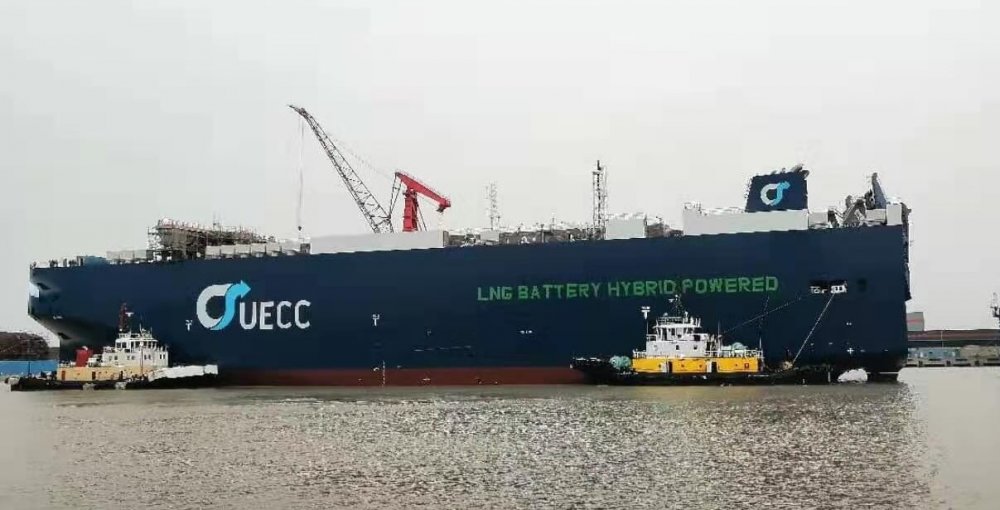
UECC has floated the first of three LNG battery hybrid PCTCs.
United European Car Carriers (UECC) launched the first of three LNG battery hybrid commissioned PCTCs in an official ceremony on Monday 12 April at the Jiangnan Shipyard in Shanghai. The remaining two vessels are scheduled for delivery in 2022.
“With the launch of our first LNG battery hybrid PCTC, we are ushering in a new era for UECC and short sea shipping in Europe,” says Glenn Edvardsen, CEO in UECC. “These ships prove that decarbonization of the industry is possible using currently available technologies.”

The new UECC PCTCs are built to the latest energy efficiency criteria, meeting the Tier 3 IMO NOx emission limitations in place for the Baltic and North Sea. All three will be equipped with battery hybrid solutions that will enable UECC to far exceed the IMO’s target of 40 percent reduction in carbon intensity by 2030.
“The introduction of batteries is an excellent demonstration of our deepening commitment to next-generation sustainability,” Edvardsen says. Battery power on the new vessels will improve operational efficiency and further reduce emissions through peak shaving, in addition to handling partial accommodation load and driving auxiliary equipment. “Battery power also provides an option for reducing emissions while in port, a feature that more and more cities are demanding,” he notes.
The ships are also equipped with dual-fuel LNG engines for main propulsion and auxiliaries. As more biofuels are set to become commercially available in the future, UECC plans to increase the proportion of carbon neutral and synthetic fuels in their future fuel mix. “We aim to be in front of the move to sustainability in shipping,” says Edvardsen. “This is the motivation behind our decision to invest in dual-fuel solutions for these newbuildings.”
With a length overall of 169 metres, a width of 28 metres and a car carrying capacity of 3,600 units on 10 cargo decks, the new vessels are highly flexible, enabling them to accommodate a wide range of high & heavy and breakbulk cargoes, in addition to cars and trucks.

